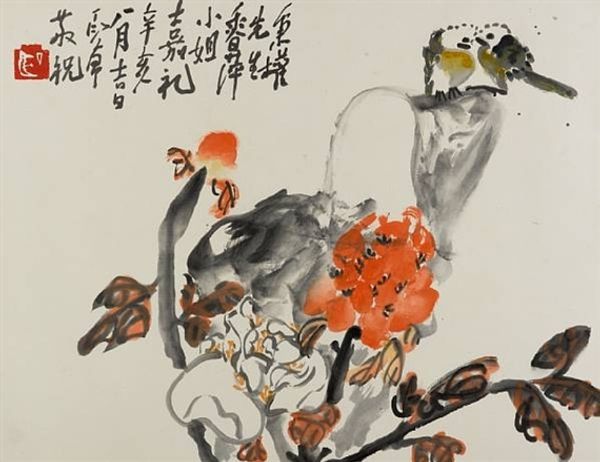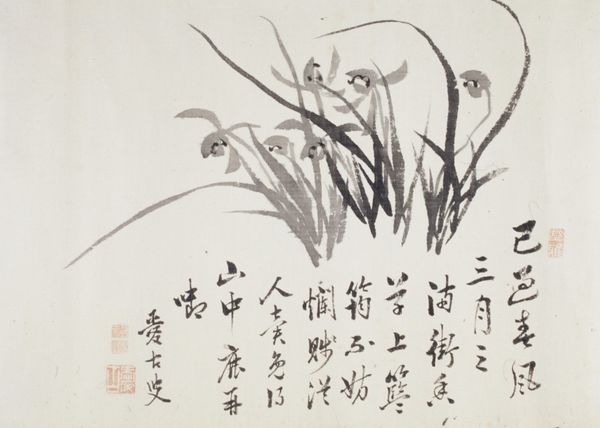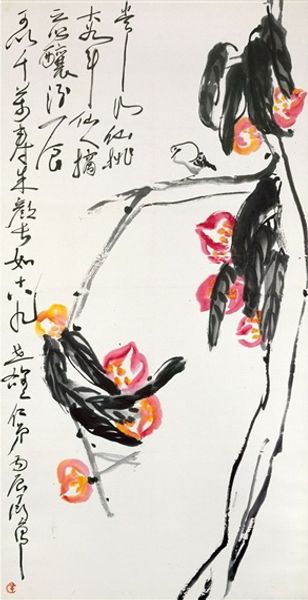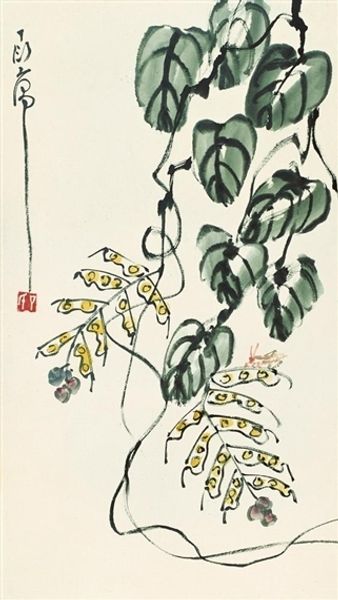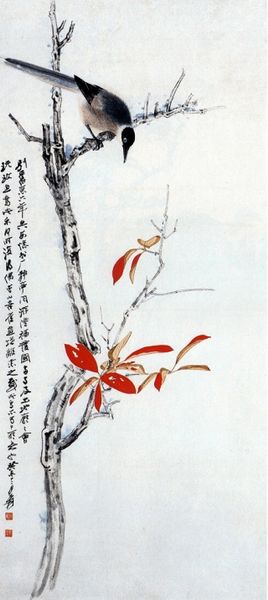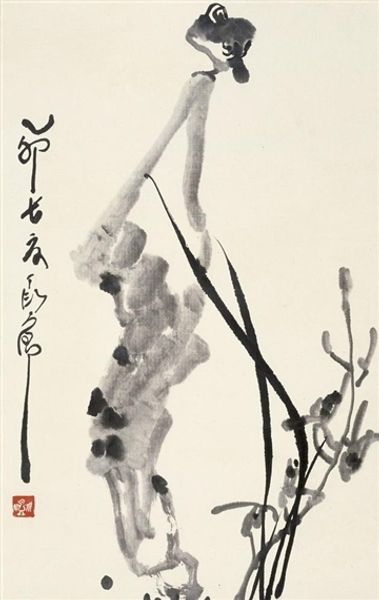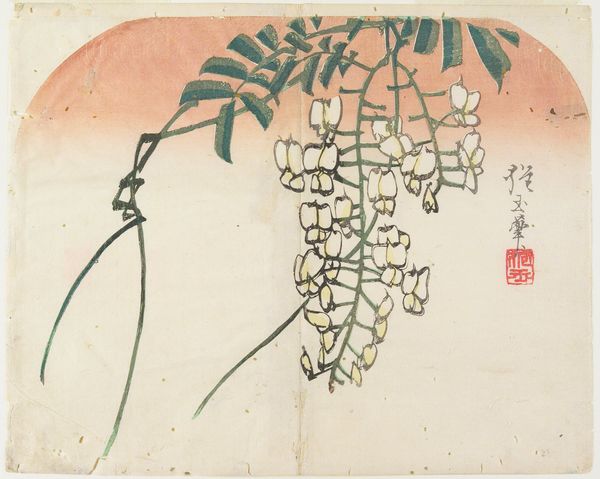
painting, ink
#
painting
#
asian-art
#
flower
#
ink
#
plant
#
botany
Copyright: Ding Yanyong,Fair Use
Art Historian: Okay, let's dive in. Editor: So, this is Ding Yanyong’s "Flowers," and it’s an ink painting. The date is unknown. I'm immediately drawn to its spontaneity – the loose brushstrokes, the splashes of colour. It feels so free, almost like a dance. What do you see in it? Art Historian: It’s a vibrant work, isn’t it? Considering Ding's background in the Lingnan School, it prompts me to ask: How can we interpret it? Traditional flower-and-bird paintings, particularly in patriarchal Confucian society, were often gendered and coded, representing feminine virtues and imperial authority, were supposed to teach viewers about balance. Yet, here, those vibrant colours feel almost rebellious against tradition. What statements are being made with its seemingly carefree spirit? Editor: That’s interesting! I hadn't considered it as possibly ‘rebellious.’ I guess I saw the colours as decorative without a political lens. Is the apparent lack of formal technique perhaps what you mean? Art Historian: It is an excellent observation! Think of Ding's colonial experience when Lingnan School adopted techniques from Japanese and Western art. This fusion of different aesthetics perhaps challenges not just art tradition, but speaks to larger power dynamics between cultures. Does it suggest how colonial experiences can transform cultural forms? Editor: Oh, that is quite powerful! It reframes my entire understanding of the work, and makes the piece way more complex, like, politically aware. Art Historian: Indeed, Ding's "Flowers" allows us to question conventional notions of Asian Art while contemplating identity formation in complex political landscapes. What does art mean when it negotiates cross-cultural encounters? Editor: I suppose that "freedom" that I perceived is actually an intentional message about navigating traditional art practice with the impact of outside influence and maybe even fighting against traditional ideas. I love how understanding context can open up so much in a painting!
